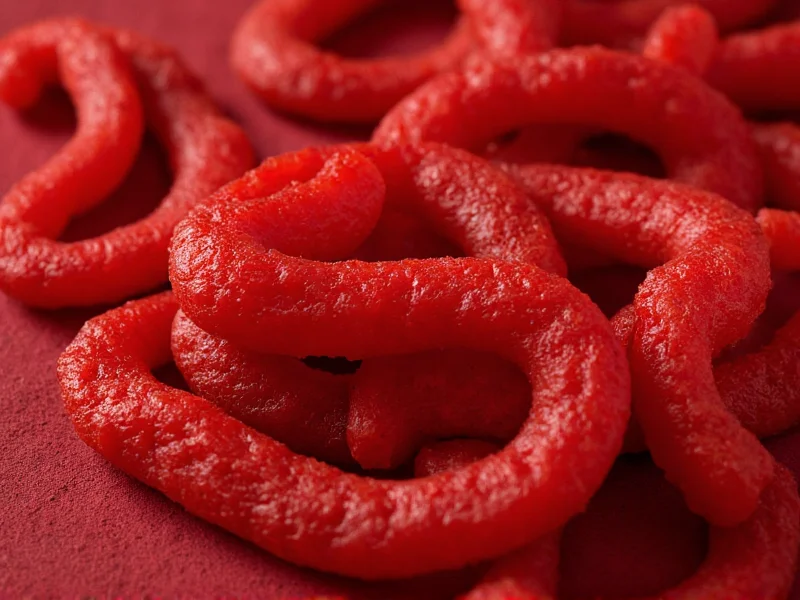Understanding Chamoy and Its Cultural Significance
Chamoy represents one of Mexico's most distinctive flavor profiles, blending sweet, sour, salty, and spicy elements into a single condiment. The origins of chamoy trace back to Asian preserved fruits brought to Mexico through the Manila galleon trade route between the Philippines and Acapulco during the colonial period. Over centuries, Mexican culinary traditions transformed these preserved fruits into what we now recognize as chamoy.
Traditional chamoy starts with pickled fruits like apricots, plums, or mangoes, which are then blended with chilies, lime juice, and salt. The resulting sauce varies in consistency from a thin liquid to a thick paste, depending on its intended use. When applied to glass rims, chamoy creates what's known as a "chamoy rim"—an essential component of authentic Mexican-inspired beverages.
Popular Drinks Featuring Chamoy Rim
The chamoy rim technique has gained popularity beyond Mexico's borders, appearing in bars and restaurants worldwide. Certain beverages particularly benefit from this flavorful rimming technique:
| Drink Type | Chamoy Application | Flavor Enhancement |
|---|---|---|
| Michelada | Full rim coating | Complements beer's bitterness with sweet-spicy contrast |
| Chamoy Margarita | Partial or full rim | Creates complex sweet-tart profile with tequila |
| Fruit Cocktails | Thin rim application | Adds savory dimension to sweet fruit flavors |
| Agua Fresca | Light rim treatment | Elevates traditional Mexican beverages |
Creating the Perfect Chamoy Rim at Home
Making chamoy rim doesn't require professional bartending skills. Follow these steps for authentic results:
- Prepare your glass: Chill your glassware beforehand for better adhesion
- Create the rimming surface: Moisten the rim with lime juice or simple syrup using a citrus wedge
- Apply the chamoy: Use a small brush or your finger to spread a thin, even layer of chamoy around the rim
- Add finishing touches: For extra texture and flavor, roll the moistened rim in tajín or chili-lime salt after applying chamoy
- Dry time: Allow 2-3 minutes for the chamoy to set before adding your beverage
When selecting chamoy for rimming, look for products with thicker consistency that will adhere well to glass. Many Mexican grocery stores carry bottled chamoy specifically formulated for rimming applications. For homemade chamoy rim recipe enthusiasts, blending dried chilies, tamarind paste, sugar, and lime juice creates an authentic base.
Variations of Chamoy Rim
Culinary creativity has expanded traditional chamoy rim into numerous variations:
- Spicy chamoy rim: Enhanced with additional chilies like habanero or arbol for heat lovers
- Sweet chamoy rim: Balanced with extra sugar or fruit purees for those preferring less spice
- Fruit-infused chamoy: Mango, tamarind, or watermelon chamoy creates distinctive flavor profiles
- Double-rim technique: Combining chamoy on the outer rim with tajín on the inner rim for layered flavors
Professional mixologists often experiment with chamoy rim for micheladas by incorporating additional elements like pulque or mezcal into the beverage itself, creating a harmonious flavor experience from rim to finish.
Authenticity and Quality Considerations
Not all chamoy products deliver authentic flavor. When seeking the best chamoy for rimming glasses, consider these factors:
- Natural ingredients versus artificial flavors and colors
- Balance of sweet, salty, sour, and spicy elements
- Texture appropriate for rim adhesion
- Traditional preparation methods versus mass-produced alternatives
Authentic chamoy should have a complex flavor profile that evolves on your palate rather than a single dominant note. The taste of chamoy rim should complement, not overwhelm, the beverage it accompanies. Many traditional Mexican markets and specialty stores offer higher quality chamoy products compared to generic supermarket versions.
FAQ: Frequently Asked Questions About Chamoy Rim
What exactly is chamoy rim made of?
Chamoy rim consists of chamoy sauce applied to the edge of a glass. Traditional chamoy contains pickled fruits (like apricots or plums), chilies, lime juice, and salt. The sauce creates a sweet, salty, tangy, and spicy coating that enhances beverages. Authentic chamoy rim may also include additional elements like tajín or chili-lime salt for texture and flavor complexity.
How do you keep chamoy from dripping down the glass?
To prevent chamoy from dripping, use a thicker chamoy consistency and apply a thin, even layer. First moisten the rim with lime juice or simple syrup, then use a small brush to apply the chamoy. Allow 2-3 minutes for the chamoy to set before adding your beverage. Chilling the glass beforehand also helps the chamoy adhere properly to create a stable chamoy rim for micheladas or other drinks.
Can you make chamoy rim without store-bought chamoy?
Yes, you can create homemade chamoy for rimming by blending dried chilies, tamarind paste, sugar, lime juice, and a pinch of salt. Simmer the mixture until it reaches a thick, syrupy consistency that will adhere to glass rims. For a fruit-based version, add mango or apricot puree. The homemade chamoy rim recipe should balance sweet, sour, salty, and spicy elements for authentic flavor.
What drinks pair best with chamoy rim?
Micheladas are the classic pairing for chamoy rim, as the savory beer cocktail complements the sweet-spicy flavors. Chamoy rim margaritas have also become popular, blending traditional tequila cocktails with Mexican flavors. Other excellent pairings include fruit-based cocktails, agua frescas, and even certain non-alcoholic beverages like tamarind agua fresca. The best drinks for chamoy rim feature complementary flavors that interact well with the complex profile of the chamoy.











 浙公网安备
33010002000092号
浙公网安备
33010002000092号 浙B2-20120091-4
浙B2-20120091-4